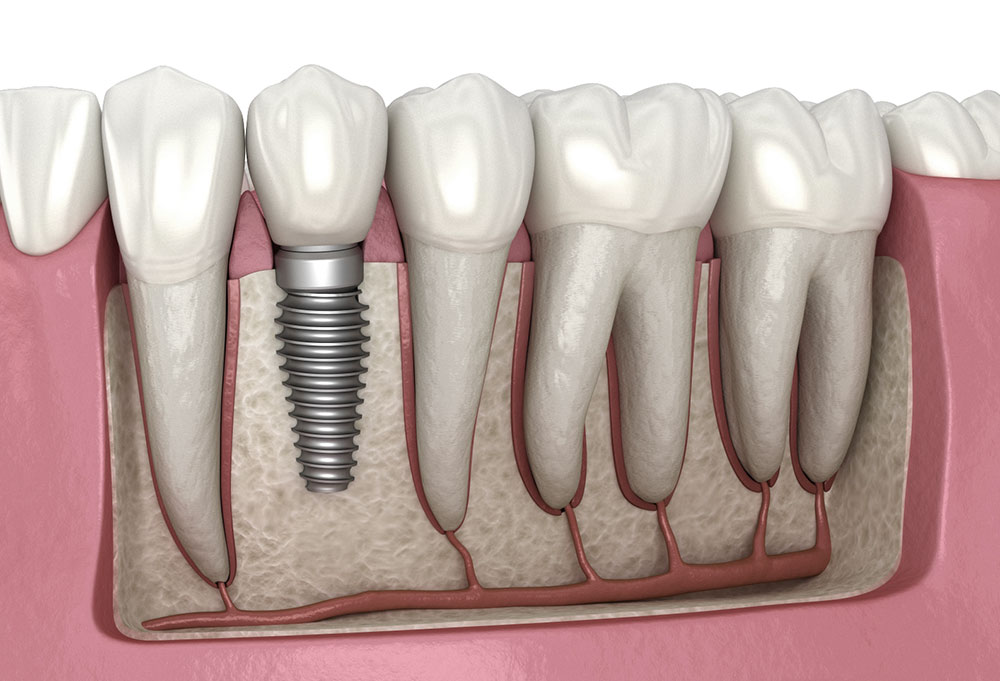Who invented the implant and how?
Implants are screws made of titanium that are used in the treatment of missing teeth and placed inside the jawbone. This technology has a very old history. Here is the invention story of the implant:

There are archaeological findings dating back thousands of years that indicate that human beings have made dental implants. In these findings, which were found in China and dated 4000 years ago, it was seen that tree nails made of bamboo wood were placed in the bones and this nail was used to replace the missing tooth. In similar findings dated 2000 years ago in Egypt, it was seen that precious metals were used instead of missing teeth. It has been observed that in some Egyptian mummies, human teeth were replaced with missing teeth, while in other mummies ivory tusks were used.
In 1931, Wilson Popence and his wife, found the lower jawbone of a young Mayan woman at an excavation site dating back to 600 BC. It was seen that the three front teeth of this jawbone were replaced by shell fragments shaped like human teeth. The bone development and stone formation seen around two dental implants show that these dental implants are used both aesthetically and functionally. This dental implant is now exhibited in the Bone Science Collection of the Peabody Museum of Archeology and Ethnology at Harvard University.
At the beginning of the 20th century, there are various dental implant samples made using different materials. The Greenfield implant system (also known as the Greenfield basket) is cited as one of the earliest successful examples of dental implants. Seated on a gold bridge, which Greenfield patented in 1908, the iridio-platinum implant contains patterns of osseointegration and remains intact for several years. The first use of titanium as an implant was made in 1940 by Bothe, Beaton and Davenport. After analyzing how bone develops around titanium screws, the group decided to use titanium for the dental implant. Bothe et al. were the first to describe osseointegration, although the term was later marketed by Per-Ingvar Brånemark. In 1951, Gottlieb Leventhal implanted rods made of titanium into mouse bones, and after this study, which had positive results, he decided that titanium metal was the most useful material for surgery.

Per-Ingvar Brånemark (May 3, 1929 – December 20, 2014) was a Swedish physician and research professor, acknowledged as the "father of modern dental implantology". The Brånemark Osseointegration Center (BOC), named after its founder, was founded in 1989 in Gothenburg, Sweden.
In the 1950s, a study was carried out on blood flow in living organisms at Cambridge University in England. The team that conducted the study first developed a small titanium chamber and then placed it in the soft tissue of a rabbit's ear. In 1952, Per-Ingvar Brånemark, a Swedish orthopedic surgeon, was concerned with the healing process and regrowth of bones. While doing research at Lund University, he used the "rabbit ear chamber" designed by Cambridge University on the hip bone of a rabbit. After a while, Brånemark tried to remove these expensive pieces from the hip bone of the rabbit, but was unsuccessful, because the bone had grown and healed by including this piece made of titanium. Later, Brånemark, who also worked on different animals and humans, came to the conclusion that titanium was a perfect fit for this type of surgery. Also in the 1950s, Leonard Linkow was one of the first to use a dental implant made of titanium and other materials into the jawbone. Artificial teeth are then attached to these pieces of metal. In 1965, Brånemark became the first to use the first dental implant made of titanium on humans.
